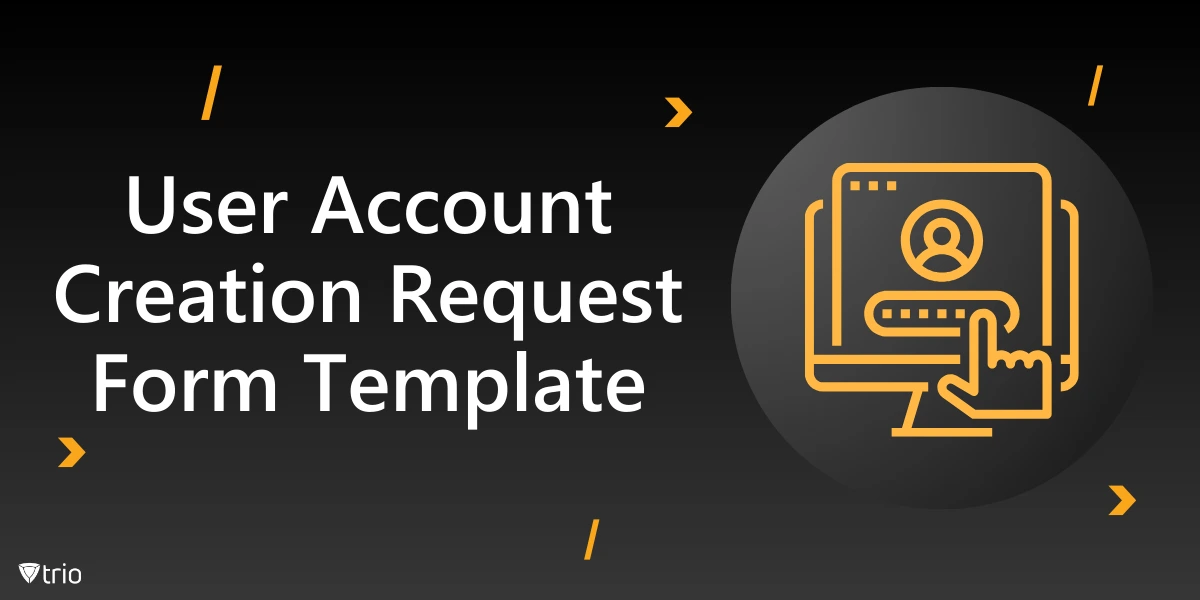In today’s technology-driven workplaces, the secure and efficient management of user accounts is essential. Whether for a new employee, contractor, or temporary team member, the process of creating user accounts often involves multiple steps, approval from management, and the assignment of access rights to various systems and applications. A User Account Creation Request Form Template can streamline this process, ensuring that all required information is collected and that proper procedures are followed to grant users the access they need.
Why a User Account Creation Request Form is Important
When user accounts are created without a formal request or standardized process, the organization may encounter several issues, including security vulnerabilities, compliance risks, and administrative inefficiencies. Without a clear record of who requested the account, what systems and applications the user needs, and who approved the request, it becomes challenging to maintain control over sensitive information and ensure proper access levels.
A User Account Creation Request Form Template addresses these challenges by documenting each step of the account creation process. This template helps ensure that all necessary information is provided upfront, minimizing back-and-forth communication between departments and reducing delays. Additionally, by standardizing the information collected, this template enables IT teams to set up accounts quickly while ensuring that access rights are assigned accurately, in alignment with security policies.
Key Components of a User Account Creation Request Form Template
A comprehensive User Account Creation Request Form Template should include the following components:
- Requester Information: Collecting information about the person initiating the request ensures accountability and allows IT personnel to follow up if needed.
- New User Information: This section should capture details about the new user onboarding, such as name, job title, and contact information, as well as their role within the organization. This information is crucial for determining the appropriate level of access.
- Account Details: Here, specify the type of account required, the duration of access (if temporary), and the systems or applications needed. This section enables IT to understand the scope of the user’s responsibilities and assign appropriate permissions.
- Access Level & Permissions: This section details the access requirements for different resources, such as network drives, specific applications, or remote access. Clearly outlining access needs prevents unauthorized access and supports security policies.
- Authorization & Approval: Approval from the new user’s manager or department head ensures that the account is being created for legitimate business purposes. This step also promotes accountability within the organization.
- IT Department Use Only: This section is for IT staff to document details related to account creation, such as username and password assignment. Tracking this information helps IT teams manage accounts effectively and ensures compliance with organizational policies.

Implementing and Using the Template
To implement the User Account Creation Request Form Template, start by customizing the form based on your organization’s specific needs. The template should be easily accessible for all employees, either through an internal portal or as part of the onboarding checklist. You may also choose to integrate it into an IT service management (ITSM) tool to streamline the request and approval process of employee onboarding and offboarding further.
Once the template is ready for employee management, make sure all employees are aware of the process for requesting new accounts. This can be done through an initial training session or as part of the new employee onboarding program. By having a consistent process for creating accounts, your organization can reduce the risk of unauthorized access and improve the efficiency of the IT department.
Onboarding an Employee After a Request Form
A streamlined user onboarding process is critical to ensuring that new employees or contractors are ready to perform their roles effectively from day one. User onboarding involves more than just creating accounts—it’s about setting up users with the necessary tools, systems, and support to begin working efficiently and securely. By following a standardized employee onboarding process, organizations can enhance productivity, improve employee satisfaction, and strengthen security from the outset.
Account Setup and Access Provisioning
Start by setting up user accounts across all relevant systems, applications, and platforms. This step involves using a User Account Creation Request Form to gather information about the new user and their required access levels. The IT team can use this form to configure accounts with appropriate permissions, ensuring that new users have the access they need without exposing unnecessary systems. Provision access to email, internal communication tools, project management platforms, and any specific software required for the user’s role which includes app onboarding. Don’t forget to include multifactor authentication (MFA) wherever possible to bolster security.
Device Configuration and Software Installation
After account setup, configure any necessary hardware, such as laptops, desktops, or mobile devices, and install the required software. This may include productivity tools, security software, VPN clients, and any specialized applications the user needs. Set up device security measures, such as encryption and remote management, to ensure that devices are protected. Providing users with properly configured devices at the beginning of their employment helps avoid delays and security risks, setting a solid foundation for a productive start.
Security Training and Policy Review
User onboarding is the ideal time to introduce new employees to the organization’s security policies and best practices. Provide training on topics such as password management, phishing prevention, and data handling protocols. Make sure they understand the access control policy, the importance of reporting suspicious activities, and any compliance requirements relevant to their role. This not only enhances security awareness but also empowers users to take an active role in maintaining a secure work environment.
A well-organized onboarding process helps employees feel welcomed and prepared, while also ensuring the organization maintains control over its digital assets. By investing in a thorough user onboarding framework, you can set new employees up for success, minimize the risk of security breaches, and establish a culture of security from day one.
Maintaining Security and Compliance with a Standardized Process
Using a User Account Creation Request Form Template helps your organization maintain security by ensuring that accounts are only created after proper authorization and with the correct access rights. It also supports compliance efforts by providing a documented record of all account creations. This is particularly important for organizations in regulated industries, where maintaining audit trails is essential for demonstrating compliance.
Additionally, a standardized account creation process minimizes the risk of human error, such as granting incorrect permissions or overlooking necessary approvals. It also makes it easier to review access levels periodically and adjust them as needed, which is a key part of maintaining a secure IT environment.
Conclusion
A User Account Creation Request Form Template is a valuable tool for any organization that wants to streamline its account management processes and ensure security. By establishing a consistent, documented process for account creation, your organization can reduce administrative burdens on the IT team, enhance security, and maintain compliance with internal and regulatory requirements. Download our own User Account Creation Request Form Template to get started.
For organizations that require a more integrated solution, consider using Trio. Trio is a Mobile Device Management (MDM) solution that offers a suite of features that streamline the process of managing user accounts, from creation to deactivation, ensuring that your organization maintains control over sensitive information at every stage. Sign up for a free trial today to see how Trio can improve your account management practices and strengthen your security posture.
Get Ahead of the Curve
Every organization today needs a solution to automate time-consuming tasks and strengthen security.
Without the right tools, manual processes drain resources and leave gaps in protection. Trio MDM is designed to solve this problem, automating key tasks, boosting security, and ensuring compliance with ease.
Don't let inefficiencies hold you back. Learn how Trio MDM can revolutionize your IT operations or request a free trial today!





